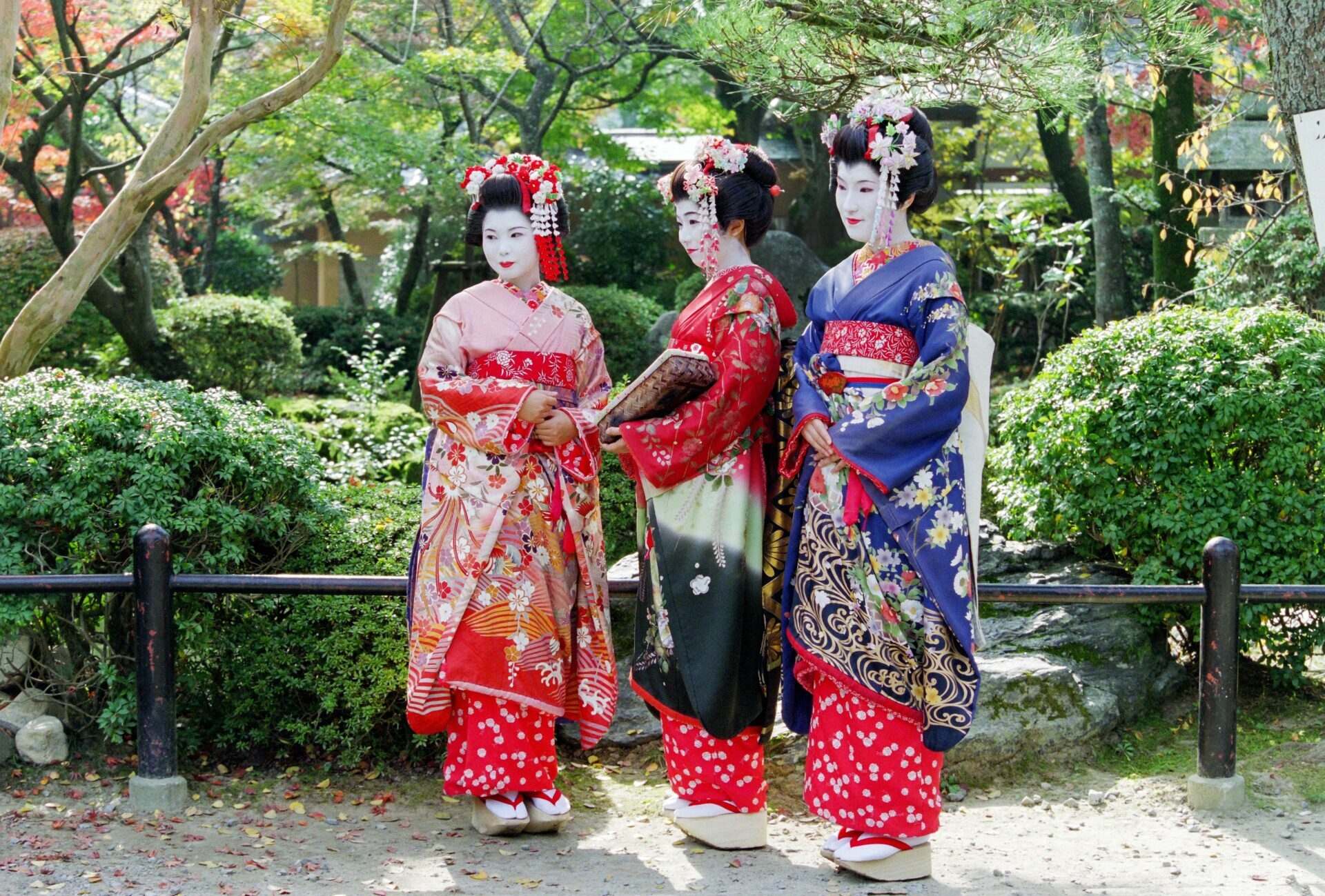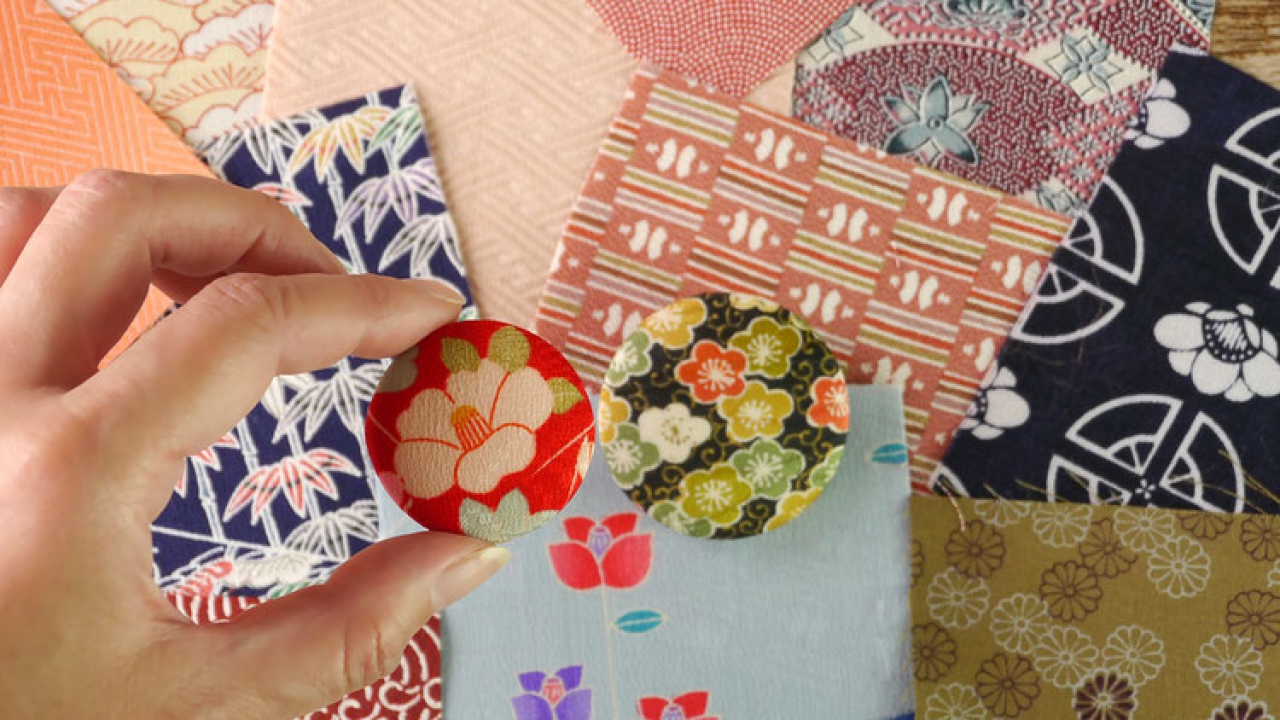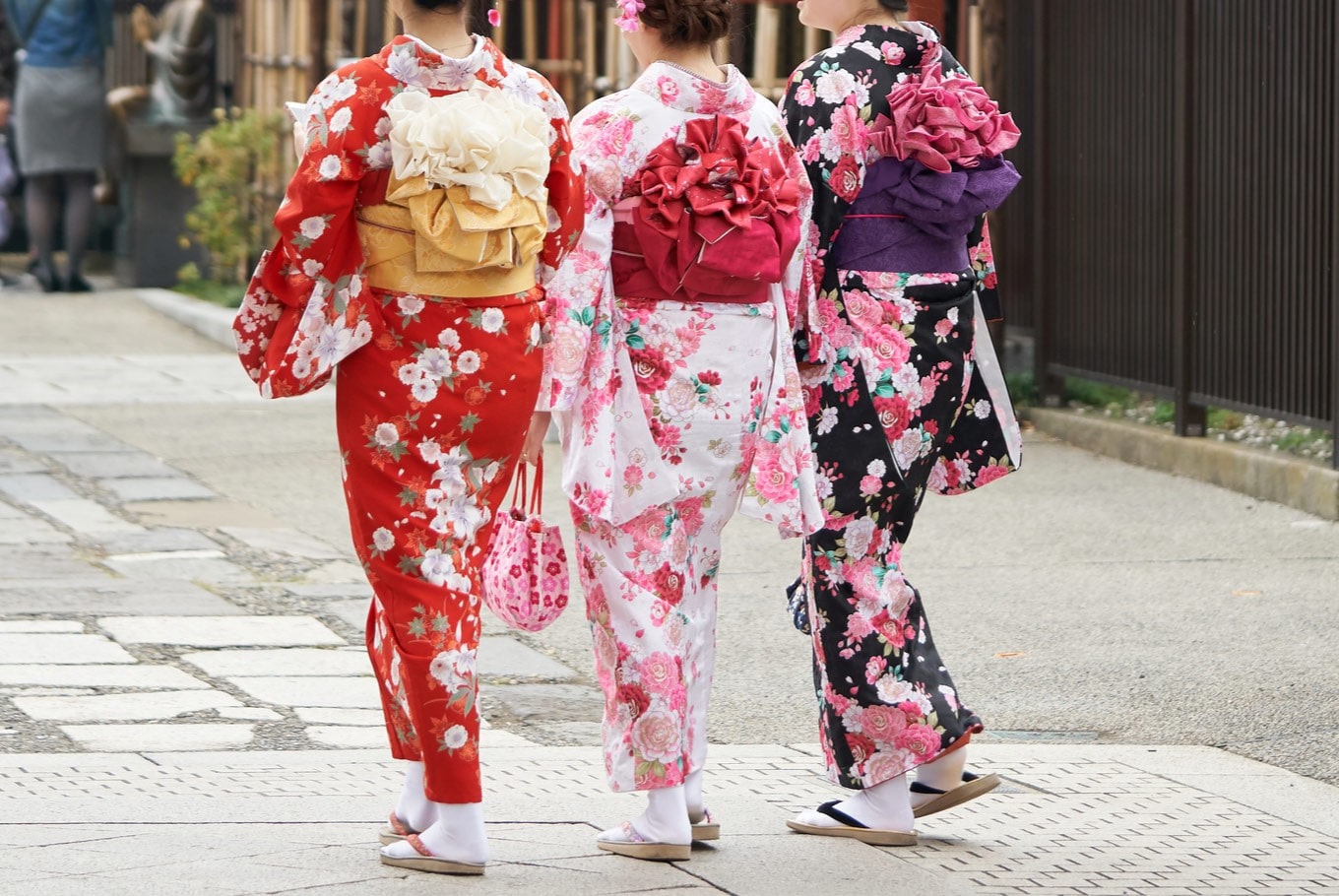

FAQs
What Does The Kimono Represent
Modified: September 23, 2023
Discover the significance of the kimono in Japanese culture and its representation of tradition, beauty, and elegance. Explore answers to general questions about this iconic garment.
(Many of the links in this article redirect to a specific reviewed product. Your purchase of these products through affiliate links helps to generate commission for Under-tec.com, at no extra cost. Learn more)
Table of Contents
Introduction
The kimono is a traditional Japanese garment that holds deep cultural significance and has captured the fascination of people worldwide. It is a symbol of Japan’s rich history, exquisite craftsmanship, and the intricacies of its society. The word “kimono” translates to “thing to wear,” emphasizing its importance in Japanese fashion and culture. Throughout the years, this iconic garment has become a powerful representation of Japanese identity.
The kimono has a long and multifaceted history, with its origins dating back over a thousand years. It has gone through various transformations and adaptations over time, reflecting the changing societal, aesthetic, and economic values of Japan. From its earliest forms as a simple garment made of rectangular fabric pieces draped around the body, the kimono has evolved into a highly structured and stylized attire.
One of the characteristic features of the kimono is its wide range of designs and patterns, which showcase the creativity and artistry of Japanese artisans. These designs often draw inspiration from nature, such as floral motifs, animals, and landscapes. Every element of the kimono’s design, from the choice of fabric to the intricate detailing, carries symbolic significance.
The symbolism of the kimono extends beyond its visual appeal. It serves as a reflection of Japanese cultural values, traditions, and social hierarchy. The garment conveys messages about the wearer’s age, marital status, and wealth, emphasizing the importance of societal norms and etiquette. Additionally, the kimono has played a significant role in shaping Japanese identity and national pride.
While the kimono is deeply rooted in tradition, it has also evolved with the changing times. In modern Japan, the kimono is still worn on special occasions, such as weddings, tea ceremonies, and festivals. However, it has also found its place in the international fashion scene, with designers incorporating kimono elements into contemporary clothing styles.
The kimono, with its rich heritage and cultural symbolism, continues to captivate people around the world. In the following sections, we will delve deeper into the history of the kimono, explore its intricate designs, discuss its symbolic meanings, and examine its role in shaping Japanese identity.
History of the Kimono
The history of the kimono spans centuries, reflecting the evolution of Japanese fashion and society. The origins of the kimono can be traced back to the Heian period (794-1185), when Japan experienced a flourishing of art, literature, and culture.
During this time, the kimono started as a simple garment called the kosode, which was made by sewing rectangular fabric pieces together. The kosode was primarily worn as an undergarment but eventually gained popularity as an outer garment among nobles and aristocrats.
As Japan entered the Muromachi period (1336-1573), the kosode underwent significant changes and became more elaborate. The garment was worn with an obi, a wide belt that added both style and functionality. The obi allowed for different ways of tying and draping the kimono, creating various silhouettes and emphasizing the wearer’s social status.
During the Edo period (1603-1868), the kimono became more standardized in terms of form and design. The government implemented strict sumptuary laws that regulated the types of fabric, colors, and patterns that could be worn by different social classes. This period saw the rise of distinct kimono styles, such as the furisode (long-sleeved kimono worn by unmarried women), the tomesode (formal kimono worn by married women), and the montsuki (kimono with family crests worn by men).
With the Meiji Restoration in the late 19th century and the subsequent Western influence on fashion, the kimono faced challenges in maintaining its prominence. Western-style clothing became more popular among the younger generation, and the kimono was gradually relegated to ceremonial and special occasions.
However, in recent years, there has been a resurgence of interest in the kimono, both in Japan and abroad. The garment is seen as a symbol of Japanese tradition and craftsmanship, and efforts have been made to preserve and promote its cultural significance.
The history of the kimono is a testament to Japan’s rich cultural heritage and the adaptability of its traditional clothing. In the next section, we will explore the diverse designs and patterns that adorn the kimono.
Traditional Kimono Designs and Patterns
The kimono is revered for its intricate and captivating designs, which reflect the natural beauty and cultural symbolism of Japan. Traditional kimono designs feature a wide range of motifs and patterns, each with its own meaning and significance.
One of the most popular design elements is the floral motif. Kimonos often showcase delicate and vibrant floral patterns, representing the changing seasons and the ephemeral nature of life. Cherry blossoms, peonies, irises, and chrysanthemums are commonly depicted, each carrying its own symbolic meaning.
Animal motifs also play a prominent role in kimono designs. Birds like cranes and phoenixes symbolize longevity, while koi fish represent perseverance and good fortune. Other animals, such as turtles and rabbits, symbolize longevity and fertility, respectively.
The natural landscapes of Japan are frequently depicted on kimono fabrics as well. Mountains, rivers, and waterfalls signify serenity and tranquility, while waves represent the vastness and power of the ocean. These landscape motifs evoke a sense of harmony and appreciation for Japan’s natural beauty.
In addition to specific motifs, kimono patterns are created using various techniques, such as dyeing and weaving. Shibori, a method of resist dyeing, creates intricate and unique patterns by manipulating the fabric before dyeing. Yuzen dyeing involves hand-painting designs onto the fabric, often using bright and vibrant colors.
The choice of fabric also influences the overall design of the kimono. Silk is the most prized and traditional material for kimonos, known for its lustrous sheen and smooth texture. Cotton and wool are used for more casual or seasonal kimonos.
It is important to note that different occasions and seasons call for specific kimono designs and patterns. Formal events may require kimonos with elegant and elaborate designs, while casual kimonos may feature simpler motifs and patterns. Additionally, the colors used in kimono designs hold symbolic meaning. Vibrant colors like red and gold signify good luck and prosperity, while pastel shades represent youth and innocence.
The traditional designs and patterns adorning the kimono reflect Japan’s deep appreciation for nature and the importance of symbolism in its culture. In the next section, we will explore the symbolic meaning behind the kimono and its significance in Japanese society.
Symbolism of the Kimono
The kimono is not just a piece of clothing; it carries deep symbolism that reflects Japanese culture and societal values. Every element of the kimono, from its design to its colors and even the way it is worn, imbues meaning into the garment.
One of the key aspects of kimono symbolism lies in its ability to convey messages about the wearer’s age, marital status, and social standing. For example, a furisode, with its long flowing sleeves, is typically worn by unmarried women, symbolizing youth and eligibility for marriage. On the other hand, a tomesode, with shorter sleeves and a more subdued design, is worn by married women as a symbol of their marital status.
Colors also hold significant symbolism in kimono designs. Red is associated with celebration and happiness, while white symbolizes purity and innocence. Black is often worn at funerals, representing mourning and respect. The choice of colors in a kimono can convey the wearer’s emotions and intentions.
The obi, the wide belt worn with the kimono, is another important symbol. Its placement and how it is tied can indicate formality, social status, and even personal taste. The way the obi is tied, whether in a simple knot or an elaborate bow, can reflect the wearer’s personality and creativity.
The patterns on a kimono also carry symbolic meaning. For example, a pattern with cranes, which symbolize longevity and good fortune, may be worn for special celebrations or important milestones. Family crests, known as “mon,” are often woven into the fabric and represent the wearer’s lineage and heritage.
Furthermore, the overall style and aesthetic of the kimono can signify regional and cultural identity. Different regions in Japan have distinctive kimono styles, showcasing their local traditions and customs. This adds another layer of symbolism to the garment, connecting it to specific communities and historical contexts.
The symbolism of the kimono goes beyond its visual appearance; it represents a code of conduct and respect for tradition. Wearing a kimono requires a certain level of etiquette, such as the way it is put on, the manner of walking, and even the way one sits. By adhering to these practices, the wearer is not only honoring the garment but also paying homage to Japanese culture and customs.
The symbolism embedded within the kimono reveals the profound connection between clothing, culture, and identity in Japan. In the next section, we will explore the role of the kimono in shaping Japanese identity and its evolution in modern times.
Kimono and Japanese Identity
The kimono holds a special place in Japanese identity, representing the nation’s rich cultural heritage and traditions. It serves as a powerful symbol of Japanese aesthetics, craftsmanship, and societal values.
Throughout history, the kimono has been an integral part of Japanese society, worn by people of all social classes. It is a garment that transcends age, gender, and status, unifying the Japanese people through a shared appreciation for their cultural roots.
Wearing a kimono is not simply putting on a piece of clothing; it is an experience that connects the wearer to the past and fosters a sense of pride in Japanese heritage. The meticulous craftsmanship involved in creating a kimono reflects the importance of attention to detail and the pursuit of excellence in Japanese culture.
In addition, the kimono embodies the value of modesty and restraint, which are highly valued in Japanese society. The loose and flowing silhouette of the kimono reflects a sense of grace and elegance, promoting a more understated and refined beauty.
The wearing of the kimono is not limited to special occasions; it is a part of everyday life for many Japanese people. This practice not only preserves cultural traditions but also reinforces a sense of continuity and connection to the past.
Furthermore, the kimono serves as a visual representation of Japanese identity on the global stage. It has become an iconic symbol of Japan, recognized and admired worldwide. The popularity of the kimono has led to its integration into contemporary fashion, bringing traditional elements into modern designs.
However, the kimono’s significance as a symbol of Japanese identity has also sparked discussions on cultural appropriation. Non-Japanese individuals wearing the kimono can sometimes be seen as appropriating Japanese culture without fully understanding its historical and cultural context. It is essential to approach the kimono with respect and sensitivity and to appreciate its significance within Japanese society.
Despite these complexities, the kimono remains a cherished symbol of Japanese identity that continues to evolve and adapt to modern times. It serves as a reminder of the enduring traditions and values that shape the Japanese people, offering a connection to the past while embracing the present.
The kimono’s profound influence on Japanese identity showcases the power of clothing as a cultural expression. In the following section, we will explore the evolution of the kimono in modern times and its place in contemporary Japanese society.
Evolution of the Kimono in Modern Times
The kimono has undergone significant evolution and adaptation in response to the changing times and influences from Western fashion. While it remains deeply rooted in tradition, the kimono has found its place in the modern world, embracing contemporary styles and gaining international recognition.
In the early 20th century, Western-style clothing began to infiltrate Japanese fashion, particularly among the younger generations. This shift towards Western fashion resulted in a decline in the everyday use of the kimono. However, the kimono persisted as a symbol of cultural pride and continued to be worn for special occasions and traditional ceremonies.
In recent years, there has been a resurgence of interest in the kimono, both in Japan and abroad. Designers have incorporated kimono elements into contemporary clothing, creating fusion pieces that combine traditional and modern aesthetics. This has allowed the kimono to reach a broader audience and become a fashion statement beyond its cultural significance.
Furthermore, various initiatives have been implemented to preserve and promote the art of kimono-making. Traditional kimono artisans continue to pass down their skills and knowledge to the next generation, ensuring the craft remains alive and continues to thrive. This commitment to craftsmanship contributes to the kimono’s enduring appeal and quality.
In addition to traditional kimono designs, contemporary artists and designers now experiment with innovative and avant-garde approaches to the kimono. This fusion of traditional and modern designs allows for a reinterpretation of the garment’s aesthetic and keeps it relevant in today’s fashion landscape.
The accessibility of kimono rentals and experiences has also contributed to the kimono’s modern popularity. Tourists visiting Japan can try on a kimono and experience firsthand the beauty and elegance of wearing this traditional garment. This not only provides a source of income for kimono artisans but also serves as a cultural exchange that promotes understanding and appreciation of Japanese traditions.
The kimono has also found its place in popular culture, appearing in movies, music videos, and fashion editorials. Its distinct silhouette and intricate designs have captured the imagination of designers, photographers, and artists around the world, further solidifying its status as an iconic symbol of Japanese culture.
The evolution of the kimono in modern times reflects its resilience and adaptability. As we move forward, it will be fascinating to see how the kimono continues to evolve and inspire new generations, maintaining its cherished place in Japanese society and fashion.
Cultural Appropriation and the Kimono
The kimono, as a culturally significant garment, has unfortunately faced issues of cultural appropriation. Cultural appropriation refers to the adoption of elements from another culture without understanding or respecting its historical and cultural context.
In recent years, non-Japanese individuals embracing the kimono as a fashion statement or costume without proper understanding and appreciation of its cultural significance has generated controversy. This has led to debates around the appropriate usage of the kimono and concerns about the commodification and misrepresentation of Japanese culture.
While cultural exchange and appreciation are important, it is crucial to approach the kimono with respect and sensitivity. Understanding the historical and cultural context of the kimono helps to promote a more inclusive and respectful engagement with this traditional garment.
It is important to recognize that the kimono is more than just a fashion item; it is deeply woven into the fabric of Japanese society and reflects centuries of tradition. Embracing the kimono should involve an appreciation for its complexities and a desire to honor and preserve Japanese cultural heritage.
Efforts have been made to educate and raise awareness about the cultural significance of the kimono. Cultural institutions, such as museums and educational programs, provide resources and information about the history, craftsmanship, and cultural meanings of the kimono. This helps to foster a greater understanding and respect for its cultural importance.
Furthermore, engaging with the kimono in a responsible manner can involve supporting authentic kimono artisans and businesses. Purchasing a kimono from reputable sources that prioritize ethical practices and value the craftsmanship helps to support and sustain the traditional industry in Japan.
Ultimately, conversations surrounding cultural appropriation and the kimono remind us of the necessity to approach cultural symbols with care and respect. Appreciating and showcasing cultural diversity requires understanding, education, and sensitivity to avoid perpetuating harmful stereotypes or exploiting cultural heritage.
Understanding the complexities of cultural appropriation helps us navigate how we can engage with the kimono in a respectful and responsible manner. By promoting cultural understanding and respecting the traditions behind the kimono, we can celebrate and preserve its cultural significance.
Conclusion
The kimono, with its rich history, intricate designs, and symbolic meanings, is a garment that exemplifies the beauty and cultural significance of Japan. From its humble beginnings to its evolution in modern times, the kimono remains a quintessential symbol of Japanese identity and tradition.
Through the centuries, the kimono has served as a means of expression, representing the values, customs, and social hierarchy of Japanese society. It reflects a deep appreciation for nature, with its motifs inspired by flowers, animals, and landscapes. The craftsmanship involved in creating a kimono showcases the meticulous artistry and attention to detail that is highly valued in Japanese culture.
As times change, the kimono has adapted and found its place in the modern world. It has become a source of inspiration for contemporary fashion, blending traditional elements with modern designs. Initiatives to preserve the art of kimono-making and promote cultural understanding have played a crucial role in keeping the kimono alive.
However, it is important to approach the kimono with respect and sensitivity, being mindful of cultural appropriation and the need to understand its historical and cultural context. By appreciating the craftsmanship, symbolism, and heritage of the kimono, we can foster a deeper connection with Japanese culture and promote cultural exchange in a respectful manner.
Overall, the kimono represents a dynamic blend of tradition and modernity. Its enduring appeal and international recognition testify to its enduring legacy as a symbol of Japanese identity and a source of pride for the Japanese people.










